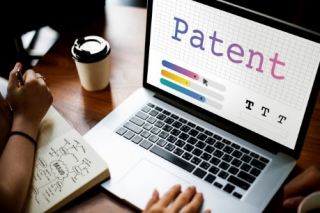The Difference between Copyright and Patents
If you’re unsure as to what the difference between copyright and patents, you may need to complete further research in order to understand how your work is, or should be, governed correctly. Using this guide on the difference between copyright and patents, as well as the advice from experienced IP lawyers in South Africa, you can determine how best to protect your work.
Protecting your work through best-practice governance will ensure that you remain the original owner of your expression, or that others are excluded from making, using or commercialising your idea.
Copyright
What do copyrights protect? Copyrights protect your expression of ideas, this is generally considered to be artistic works which include:
- Literary works
- Musical works
- Artistic works
- Cinematograph films, and more.
Copyright protects the physical/digital expression of ideas that are formed using words, tools, instruments, and more; copyright therefore does not protect the process in which the particular work was created, nor the use of the information within.
Does copyright need to be registered? Copyright exists automatically upon creation of the work if it is in the class of work recognised by the Copyright Act. Your work therefore does not have to be registered for copyright, unless it is a film whereby a copyright lawyer can help you register.
Patent
What is a patent? A patent provides inventors with the right to exclude others from making, using, or commercialising the patented invention for the allocated term.
What does a patent protect? Patents protect inventions, such as new processes, equations or machines. A patent is different from copyright as it does not just protect the expression of ideas, but also the actual idea and/or process. A patent will therefore give the holder the opportunity to challenge others who may use their invention.
How to register a patent? Specialised IP lawyers in South Africa can assist you with the registration process when applying for a patent. This will ensure a streamlined and effective application procedure which will protect your idea for a set term.
The Difference?
A simple example which will help you understand the difference between copyright and patents: A book which contains methods of creating crafts. The book will be protected by copyright and therefore cannot be reproduced, the methods can still be used. However, if the methods are patented, people would be unable to use the methods unless given authorisation.
Should you need a consultation to further explain the difference between copyright and patents in order to ensure that you protect your work correctly, reach out to expert IP lawyers in South Africa.
Protecting unregistered intellectual property contractually
What is the benefit in unregistered intellectual property?
The value in unregistered intellectual property, such as confidential information and trade secrets, is in keeping such information secret. The value is lost once the information is in the public domain. It is not like an invention that is protected by a registered patent once it is disclosed, or copyright that also enjoys protection against, inter alia, copying and adaptation once it has been reduced to a material form and made available to the public. A trade secret by definition needs to be kept out of the public domain in order for it to enjoy protection under the common law.
Why is a binding contract necessary?
It is advisable to ensure that every person or entity that has access to an organisation’s confidential information or trade secrets is bound contractually to keep such information confidential and not to disclose them to any third person, otherwise than as provided for in terms of the agreement with the owner of the information or trade secret. A binding contract will afford the owner of the information an additional cause of action or remedy under the law of contract (other than its rights and remedies under the common law) in the event that the information is:
- misappropriated;
- used; or
- disclosed,
in breach of the agreement between the parties.
Provisions that may be included in the confidentiality agreement
While the breach of an agreement only really provides the owner of the information with a claim against the person or entity that breached the provisions of the agreement, wide provisions can be inserted in the agreement (subject of course to consensus between the parties) to deal with:
- curtailing any potential further harm;
- specific performance; and
- the payment of damages.
The owner of the information can also require that it be indemnified against all harm, loss and damage that it suffers as a result of a breach of the agreement by the recipient of the information in question. While this does not assist the owner of the information for practical purposes, as the information will have in any event been disclosed and made available to unauthorised third parties, it does serve to improve the owner’s financial position.
While it is not a mandatory requirement for an agreement to protect confidential information or trade secrets need to be in writing, it is advisable that any agreement between parties that regulates the protection and non-disclosure be reduced to writing and signed by the parties. A written contract will prevent a situation from arising where the owner of the information is required to prove on a balance of probabilities that the agreement exists and what its terms are, see the case of Makate v Vodacom (Pty) Limited [2015] JOL 34657 (GJ). This case was heard in the High Court of South Africa, Gauteng Local Division, Johannesburg and more recently by the Constitutional Court.
If the written agreement also contains an “entire agreement” clause, the terms of the agreement between the parties will be limited to what is set out in the document itself and the parties will not be entitled to adduce any additional evidence in an attempt to show that other terms existed, or that it was agreed that the provisions of the agreement as contained in the written document could be deviated from.
By reducing an agreement to writing the owner of the information is entitled to the warranty that the recipient of the information is in fact authorised to enter into the agreement. Such an agreement would have assisted the plaintiff in the Makate case enormously. Although the High Court held that the plaintiff had proved the existence of an agreement on a balance of probabilities, it also found that the person who had concluded the agreement on the part of Vodacom, did not have the requisite authority to do so.
On appeal, in Makate v Vodacom (Pty) Limited [2016] JOL 35777 (CC), the Constitutional Court found on the facts that the person who had concluded the agreement on the part of Vodacom (a director and the head of product development within the organisation) did in fact, have the ostensible authority to bind Vodacom, and therefore had ostensible authority to conclude the agreement with Makate.
Irrespective of the opposite findings by the two courts with regard to the authority to conclude contracts, both findings are significant from an intellectual property perspective, in that, they highlight the fundamental importance of proving that a valid agreement exists between the parties in respect of the exploitation of the idea and the extent to which the parties share in such exploitation. This reiterates the fact that there is no protection in an idea on its own – only the manifestation of that idea.
Whilst the agreement in this case related to an idea and not a confidentiality or non-disclosure agreement per se, the principle remains the same.
For the reasons set out above, any third party that will be given access to, or could conceivably gain access to, confidential information or trade secrets for any reason whatsoever, should be bound in writing to keep such information or trade secrets confidential and not to disclose this or only to disclose it in defined, limited circumstances set out in the written agreement concluded between the parties. This includes all employees, service providers, consultants and professional advisers (unless the latter are required by virtue of their profession to keep information confidential).
LexisNexis South Africa, in partnership with Norton Rose Fulbright, has produced the online solution, Practical Guidance Intellectual Property, in order to assist companies to navigate the law pertaining to this intangible yet highly valuable form of asset or property. This web based solution provides practical, up-to-date guidance for all intellectual property needs and offers useful templates, guidance notes, checklists and other practical aids and resources to assist in making informed and accurate decisions. For more information, visit: http://practicalguidance.lexisnexis.co.za/index.php/practice-areas/intellectual-property



